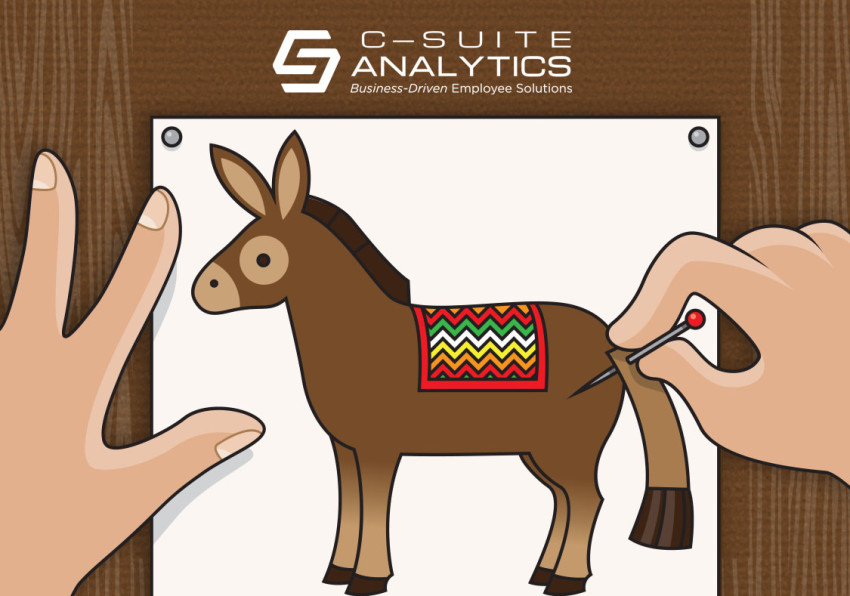What is the largest improvement in cutting turnover in 12 months that is realistic? Is…
Employee Retention, Engagement, & Pinning Tails on Donkeys

About 20% of the executives we talk with say something like this:
“We understand why you want our leaders to have retention goals, but that’s difficult here because our employees report to more than one supervisor.”
The background is this. We have proven in all industries…and on all continents…that implementing Finnegan’s Arrow solves employee retention and engagement. Our process is business-driven in that executives (1) establish the dollar cost of both turnover and engagement, (2) establish goals for each leader, (3) train leaders to conduct Stay Interviews, (4) ask leaders to forecast how long each employee will stay or perform on their next engagement survey, and lastly (5) those leaders become accountable for achieving their goals and the developing accurate forecasts.
The business-driven part is that these same processes have been used for decades by companies to manage sales. Salespeople know the dollar value of each sale, have sales goals, have sales tools, they forecast future sales, and they are accountable for their goals and forecasts. We’ve re-purposed sales processes into retention and engagement processes…and it works by cutting employee turnover and improving employee engagement.
But it only works if each employee reports to a specific leader and knows who that leader is. For those 20% or so executives who haven’t aligned each employee with one leader, we’ve asked them to do so and they have. The bigger question, though, is this: How strong can supervisor/employee relationships be if employees can’t identify their supervisor?
Study after study tells us the single best way to improve engagement and retention is to give each employee a supervisor she can trust. The joke here is to say if we give each employee several supervisors, surely they’ll trust at least one of them. But the truth is, providing employees with multiple supervisors just confuses their directions, communications, feedback, and ultimately their trust.
And that means you reduce their productivity…as well as likely their engagement. And our studies tell us those companies that assign employees to more than one supervisor have higher turnover. The reason is clear, that they cannot form the types of employee/supervisor relationships that cause employees to stay.
So back to donkeys. During a recent conversation with a CEO who owned this dilemma, she acknowledged this error and said, quote, “I guess regarding supervisors we need to pin the tail on the donkey.” And her meaning was immediately clear to me.
So what’s the lesson? Matrix management in any form brings value to shared ownership…but detracts from engagement and retention which are the greatest contributors to productivity. To make engagement and retention happen by implementing Finnegan’s Arrow, choose one boss for each employee and tell them who their boss is. And then hold that boss accountable for engagement and retaining his team.



